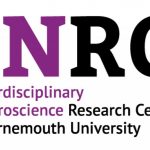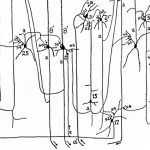Dear colleagues,
Next week we will have two thematic research seminars in neuroscience organized by Dr Julie Kirby and me.
-The first of the seminars of this series will take place next Wednesday the 12th of March, 15:00, P302 LT. The invited speaker is Dr Dimitris Pinotsis, http://iris.ucl.ac.uk/iris/browse/profile?upi=DPINO08.
Dr Pintosis obtained his PhD in September 2006 from the Department of Applied Mathematics and Theoretical Physics (DAMTP) of the University of Cambridge. After an EPRSC Research Fellowship and lectureship in Reading University he moved to UCL where he is working at the Welcome Trust Centre for Neuroimaging ; having secured funding from EPSRC and the Wellcome Trust.
Dr Pinotsis has a strong track record and a number of landmark publications in imaging neuroscience modelling; he is also the author of the most advanced versions of the state-of the art models for neuroimaging data, the dynamic causal models. I am familiar with Dimitris work and I very strongly encourage the attendance to researchers both in machine learning and in cognitive psychology.
The title of his exciting talk is “Electrophysiological Data and the Biophysical Modelling of Local Cortical Circuits”. “Dynamic Causal Modelling (DCM) is a general framework that allows for a formal (Bayesian) analysis of the properties of neuronal populations, based upon realistic biophysical models. In the past few years, a wide variety of such models has been implemented in the DCM framework. In this talk, I will first review some of these recent advances and then focus on models that allow one to infer spatial parameters of cortical infrastructures generating electrophysiological signals (like the extent of lateral connections and the intrinsic conduction speed of signal propagation on the cortex). I will try to highlight the links between different models and address how the experimental hypothesis or question asked might inform the choice of an appropriate model”.
-The second seminar of this series will take place on Friday the 14th of March, at 14:00 in K101. Our guest is Prof. Maria Victoria Sanchez-Vives, http://www.sanchez-vives.org/
Maria V. Victoria Sánchez-Vives, M.D., PhD in Neurosciences has been ICREA Research Professor at the IDIBAPS (Institut d’Investigacions Biomediques August Pi i Sunyer) in Barcelona since 2008, where she is the head of the Systems Neuroscience group. She is currently co-director of the Event Lab (Experimental Virtual Envir onments in Neuroscience and Technology).
After obtaining her PhD at the University of Alicante in Spain, MVSV was postdoctoral fellow/research associate at Rockefeller University (1993-1994) and Yale University (1995-2000). She next established her own laboratory at the Neuroscience Institute of Alicante (Consejo Superior de Investigaciones Científicas) while being Associate Professor of Physiology. Her independent research has been supported by national and international agencies. She has been funded by Human Frontier Science Program and has been partner in six European Projects. She is currently coordinator of the FET EU project CORTICONIC.
Her main interests include how neuronal and synaptic properties as well as connectivity determine the emergent activity generated by neuronal networks. The integration of the cortical information giving rise to bodily representation and the combination of brain-computer interfaces and virtual reality for understanding these processes is another research line of her group.
She is currently Chief Editor of Frontiers in Systems Neuroscience.
For information see www.sanchez-vives.org
Maria Victoria Sanchez-Vives is a renowned neuroscientist which has published a number of highly influential papers in journals like e.g. Science, Nature Neuroscience, PNAS or Journal of Neuroscience. I strongly encourage not missing the opportunity to attend to this seminar and to discuss perhaps potential synergies.
The title of her talk will be “Emergent oscillatory activity in the cerebral cortex”.
“Understanding complex systems like brain networks is a challenge. Cortical networks can perform computations of remarkable complexity, accounting for a large variety of behaviours and cognitive states. At the same time, the same networks can engage in stereotypical patterns of spatio-temporal activation, such as the ones that can be observed during sleep, anaesthesia and in cortical slice. Collective phenomena emerging from activity reverberation in cortical circuits at different spatio-temporal scales results in a rich variety of dynamical states. Slow (around or below 1 Hz) and fast (15-100 Hz) rhythms are spontaneously generated by the cortical network and propagate or synchronize populations across the cortex. This is the case even in isolated pieces of the cortical network, or in vitro maintained cortical slices, where both slow and fast oscillations are also spontaneously generated. The similarity between some of these patterns both in vivo and in vitro suggests that they are somehow a default activity from the cortical network. We understand that these emergent patterns provide information on the structure, dynamics and function of the underlying cortical network and their alterations in neurological diseases reveal the circuits dysfunction”.
If you would like to talk to the guests kindly let me know.
Best wishes, Emili
Emili Balaguer-Ballester, PhD
Faculty of Science and Technology , Bournemouth University
Bernstein Center for Computational Neuroscience, University of Heidelberg
 New Frontiers in Neuroscience: Neuroimaging and Integrative Multi-Sensing Methods
New Frontiers in Neuroscience: Neuroimaging and Integrative Multi-Sensing Methods Erasmus + Programme: Visit to the Sanchez-Vives Lab at the Institute for Biomedical Research IDIBAPS-Barcelona
Erasmus + Programme: Visit to the Sanchez-Vives Lab at the Institute for Biomedical Research IDIBAPS-Barcelona










 Upcoming opportunities for PGRs – collaborate externally
Upcoming opportunities for PGRs – collaborate externally BU involved in new MRF dissemination grant
BU involved in new MRF dissemination grant New COVID-19 publication
New COVID-19 publication Conversation article: London Marathon – how visually impaired people run
Conversation article: London Marathon – how visually impaired people run MSCA Postdoctoral Fellowships 2024
MSCA Postdoctoral Fellowships 2024 Horizon Europe News – December 2023
Horizon Europe News – December 2023